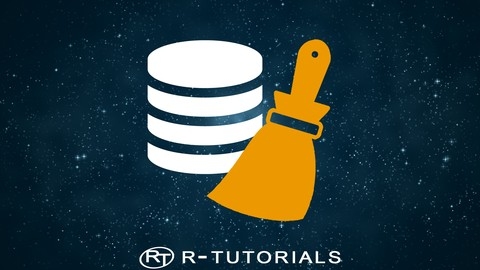If you’re looking for the best tidyverse courses on Udemy, you’ve come to the right place.
The tidyverse is a powerful collection of R packages that can streamline your data analysis workflow.
In this blog post, we’ll explore some of the top-rated tidyverse courses on Udemy that can help you unlock the full potential of this versatile tool.
R Tidyverse Reporting and Analytics for Excel Users
You’ll start by learning the basics of R, including how to set it up and load data.
The course then dives into core Tidyverse concepts like creating calculated columns, filtering data, and pivoting – drawing parallels to Excel functions you’re already familiar with.
A major focus is on data visualization using libraries like ggplot2, plotly, and highcharter.
You’ll learn how to create various chart types, layer multiple plots, add text annotations, and even create small multiples with facets.
This is a game-changer compared to Excel’s limited charting capabilities.
The course also covers more advanced topics like joining data (similar to vlookups), working with missing values, and combining files efficiently.
You’ll learn how to integrate R with Excel using Power Query to get data in and out seamlessly.
But what really sets this course apart is its emphasis on reporting and dashboarding.
You’ll learn how to create polished reports and interactive dashboards using RMarkdown and Flexdashboards.
This allows you to share insights in a professional, reproducible way – far beyond what’s possible in Excel.
Throughout, you’ll pick up best practices for writing clean, efficient R code as well as troubleshooting techniques.
The instructor even addresses common questions like how R compares to Python.
You’ll gain valuable skills applicable to data analysis, reporting, and dashboarding in any field.
Cleaning Data In R with Tidyverse and Data.table
The course starts with an introduction that highlights the importance of clean and tidy data for successful analysis, and why R is an excellent choice for data cleaning tasks.
You will learn how to easily import data into R and explore the best table types available, like data frames and tibbles.
The course then dives into handling missing values and detecting outliers, covering both simple methods and machine learning techniques for imputing missing data.
It also teaches you how to identify statistical outliers in univariate and multivariate datasets.
A significant portion of the course is dedicated to the Tidyverse, a powerful collection of R packages designed for data manipulation and visualization.
You’ll understand what the Tidyverse is and how to use its key features, such as the pipe operator and the underlying principles of tidy data.
The course covers essential tasks like changing table formats, splitting columns, converting between long and wide formats, and performing string manipulations with the stringr package.
Another important aspect is learning about query systems in R, including dplyr for data manipulation and data.table for efficient data operations.
You’ll learn how to subset, filter, and query data using these tools, which are essential skills for data cleaning and analysis.
To solidify your learning, the course includes a real-world course project where you’ll apply the techniques you’ve learned to clean and analyze a dataset.
Step-by-step solutions are provided, guiding you through data import, cleaning, and querying processes.
Data science with R: tidyverse
You will start by learning the fundamentals of data manipulation with dplyr and tidyr, mastering functions like select(), mutate(), filter(), and pivoting data frames.
The course then dives into working with different data types, including strings with stringr, factors with forcats, and dates/times with lubridate and hms.
You’ll learn how to perform pattern matching, substring operations, and work with time zones and date-time arithmetic.
Data visualization is a key focus, with an in-depth exploration of ggplot2 for creating various plot types like histograms, scatter plots, bar charts, and even maps and word clouds.
You’ll learn how to customize plots and combine multiple variables effectively.
Functional programming concepts are introduced through purrr, teaching you how to apply functions over lists and work with nested data structures.
The course also covers relational data manipulation with dplyr’s join and set operations.
Finally, you’ll learn about tidy evaluation with rlang, enabling you to write functions that can work with quoted expressions.
The course culminates in a final project where you’ll apply your skills to explore COVID-19 pandemic data in the US.
Throughout the course, you’ll gain hands-on experience with assignments and walkthroughs, ensuring you can confidently wrangle, visualize, and analyze data using the tidyverse toolkit.
Data Science with R Tidyverse
The course starts with an introduction to data manipulation using the dplyr package.
You’ll learn how to filter, select, extract, create new variables, sort, group, and summarize data.
The course also covers the handy %>% pipe operator from magrittr.
Next, you’ll dive into data reshaping with tidyr.
This includes learning about tidy data principles and how to gather and spread variables across columns.
You’ll even learn how to separate values within a single cell into multiple columns.
Data visualization is a major focus with ggplot2.
You’ll start by learning the principles of building plots, then move on to creating different types of graphs like scatterplots, boxplots, barcharts, and line charts.
The course also covers combining multiple plots into a panel and advanced formatting options like adding errorbars.
Importing and exporting data is essential, so you’ll learn how to work with Excel, CSV, and even Google Sheets files.
Throughout the course, you’ll pick up additional tips and tricks for using dplyr and ggplot2 more effectively.
You’ll be well-equipped to analyze data using R’s powerful tidyverse tools.




